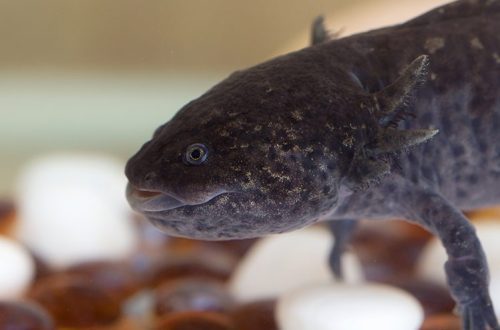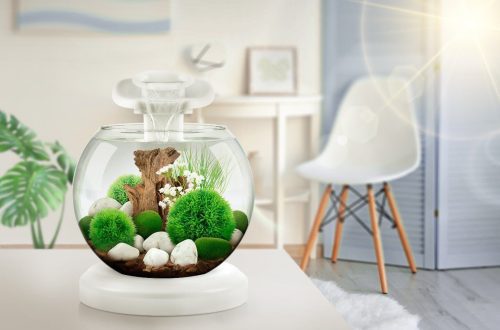
Piranhas at home: is it worth it to start?
For those who are far from aquarism, keeping piranhas in a home aquarium may seem like something dangerous and reckless, because action movies present us with bloodthirsty hunter piranhas. We decided to find out if piranhas are really so scary and what living conditions in the aquarium can be called suitable for these exotic fish.
Piranha is the common name for a large family of freshwater fish from the order of characins. They live in the countries of South America. Rivers, streams and floodplain lakes are their natural habitat.
Not all piranha predators are aggressors; many are happy to bite and eat nuts falling from trees. One of the most herbivorous piranhas is the common methinnis. Metinnis in the aquarium will gladly eat the lettuce leaves you offer, and at the same time all the aquarium plants.
Piranhas live in packs, during the hunt they crash into a flock of small fish, make a commotion that allows them to attack fish that have strayed from their brethren. Carrion caught in the river is also suitable prey. If a sick or injured animal gets stuck in a river during the rainy season, it is likely to be attacked by toothy hunters.
Can piranhas attack humans? They can. Especially if an unlucky swimmer became an uninvited guest on their territory during a period of hungry drought or spawning, when these tropical fish are more aggressive. They are able to inflict injury with their bites, but most often piranhas do not fight with an adult, but hide or swim away. Despite their formidable appearance, piranhas are cautious and even shy.
Can an aquarist put his hand into a piranha aquarium to clean the glass, fix the scenery, and so on? It is possible, but carefully so as not to scare the piranhas to the point of losing their pulse. Many owners write in thematic online communities that their wards are so frightened that they hide or even faint, fall into a stupor and can only recover after a few hours.
Piranhas can bite an aquarist on the hand only under stress (due to an overcrowded aquarium, poor water quality), because of hunger (piranhas need to be fed once a day), or if there is a bleeding wound on the aquarium owner’s hand. But if you are calmer to carry out all the manipulations in protective gloves, then why not.
It is impossible to ignore the amazing ability of piranhas to regenerate. Even a significant injury received in a skirmish with relatives will heal soon enough, and the fish will happily live on.
Piranhas, depending on the species, can live from four to 28 years. The most common among aquarists, the red-bellied piranha lives in an aquarium with good care for about 15 years.

Most complaints from piranha owners are related to content errors made out of ignorance. Piranhas can accidentally jump out of the aquarium, so the aquarium must be provided with a lid. If the piranha nevertheless jumped out and rushes about on the carpet, do not try to catch it with your hands, a stressed fish can easily bite your finger.
How to catch piranhas if they need to be transplanted for a while? Their sharp teeth interlock without a gap, so you’ll need a metal net. Plastic they easily bite through.
Piranhas become more territorial with age. If five fry can be settled in a hundred-liter aquarium, then piranhas that have grown up to seven or eight centimeters are more suitable for an aquarium of 350-400 liters. If piranhas do not have enough space, they show aggression towards each other. A weaker individual can gnaw off a fin.
A large company of matured piranhas is strictly forbidden to settle in a small aquarium. Find out in advance to what size the variety of piranhas you like grows. Red pacu at home can easily reach up to 50 centimeters in length, and you will find that a maximum of two individuals fit into your 400-liter aquarium without problems.
But it is not necessary to settle piranhas one by one. Remember how they live and hunt in the wild: they are real team players. A lonely piranha will be very sad, she can fall into depression, stop eating – nothing good will come of it.
The other extreme is to add piranhas to guppies and neons. And wonder why all the fish have disappeared somewhere, and the piranha is full and happy. This is a predator that perceives small fish as potential prey.
The best solution is a species aquarium with a flock of at least five piranhas. But even in this case, piranhas should be the same in age and size. It is better to buy several fry at once, which will grow up side by side with each other. There is always a leader in the pack, a particularly large individual, which to some extent subjugates the rest. If you notice that a similar hierarchy has been established in the piranha team, do not worry, this is in the order of things.
The large pupils of piranhas are not adapted to constriction in bright light. Immediately expect that the lighting in the aquarium will be very moderate. In the case of piranhas, it is better to place fewer plants and more shelters in the aquarium: caves, grottoes, decorations.
The most interesting thing is that the first thing you need to clarify is whether keeping piranhas in a home aquarium is prohibited by law in your country. In some countries, most piranha species cannot be kept at home. In Russia, aquarists who decide to keep the popular common piranha (aka red-bellied) often have difficulty finding these fish. Not every pet store has piranha fry.

Common piranha, red-bellied piranha or natterera piranha is the most popular variety of these fish. It is she who draws the imagination when you hear the word piranha. Let’s take a closer look at its distinguishing features.
The wide body of the fish looks slightly flattened on the sides. Large anal fin, dorsal and pectoral – smaller. The caudal fin is bifurcated, next to it is the adipose fin. The body is covered with scales.
The body of an adult is silver-steel, there are scales with a golden tint. The lower part of the head, the ventral part, and the anal fin are reddish-orange. In the aquarium grows up to 35 centimeters.
The lower jaw is massive and expressive, the lower teeth are larger than the upper ones. Males are smaller than females, unlike females, their anal fin is pointed, not rounded. The eyes are large, with large pupils.
Tropical fish need very warm water, preferably in the range from +26 to +28 degrees. Water hardness is less than two, acidity is from 6,2 to 7,2.
Good aeration will help saturate the water with oxygen, this will save piranhas from problems with the cardiovascular system. A powerful filter is needed, as piranhas love to eat well and produce a lot of waste.
As for nutrition, piranhas are omnivorous, but not everyone likes dry food. Prepared foods may be suitable for tropical fish such as cichlids. Much more willing to feed on small live fish. There is also a more humane option – chopped pulp of low-fat sea fish or peeled shrimp. You need to feed once a day, in two to three minutes they have time to get enough. Remove food residues immediately, piranhas are not one of those fish that study the ground for food debris. The exception is raw vegetables scalded with boiling water. If you are giving piranhas a vegetable feed like half a cucumber or a potato, let the vegetable sit in the tank for a few hours.
Piranhas, like any other fish, need proper care, the right diet and enough personal space. If you are ready to learn about these aquarium inhabitants and take care of them, then nothing will stop you from becoming a happy caring owner of a flock of piranhas. And life side by side with such unusual creatures will certainly become more interesting.





